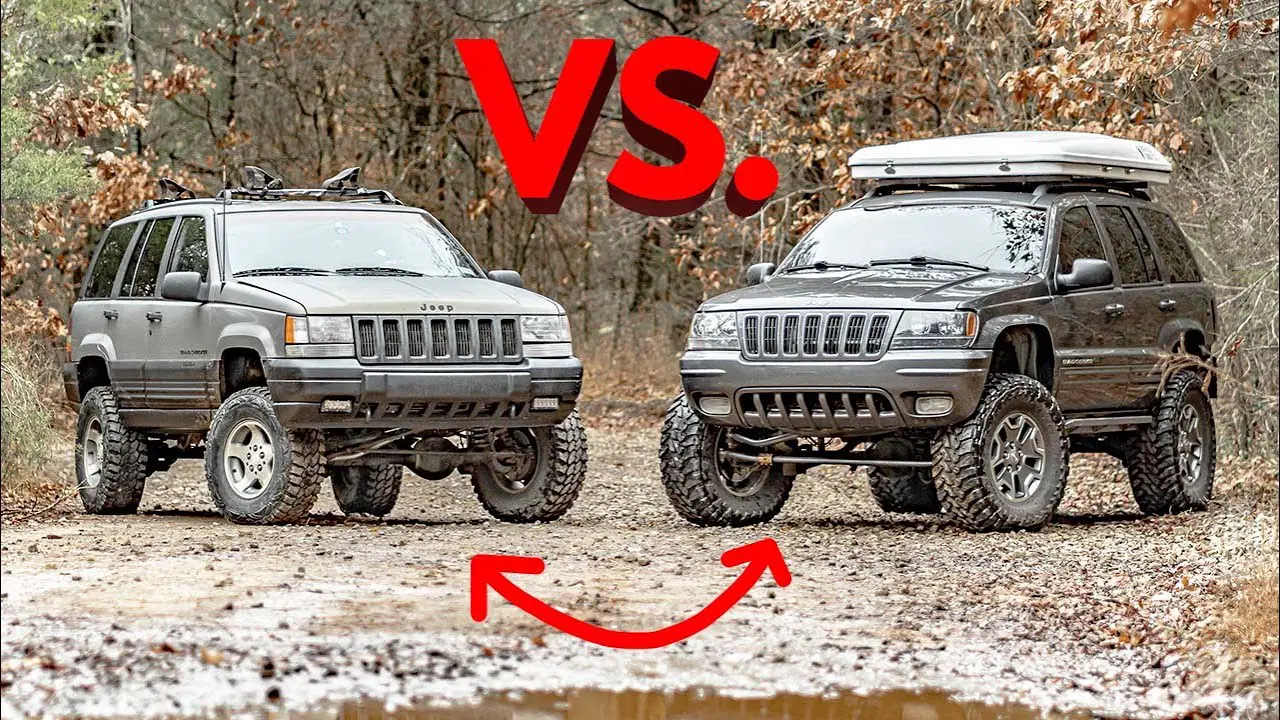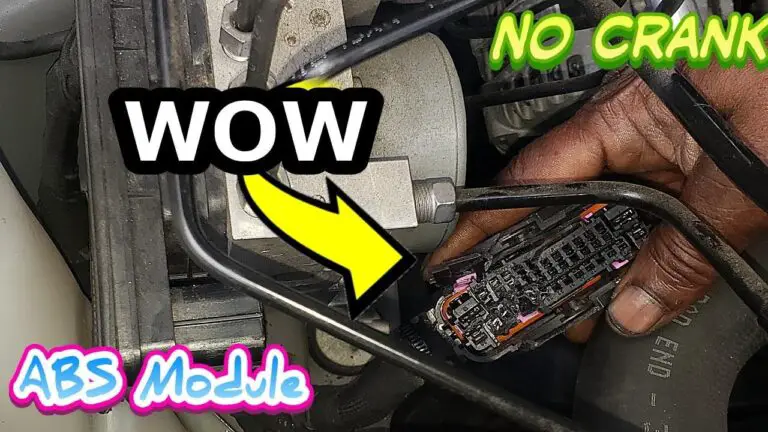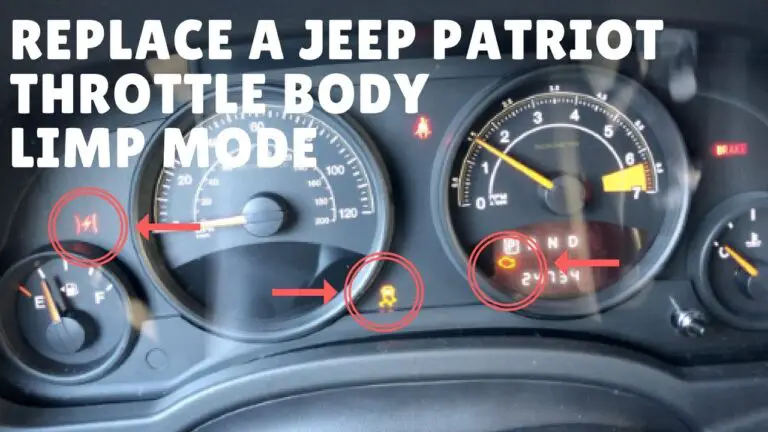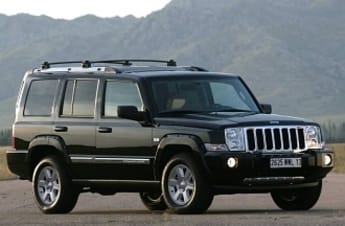Jeep XJ vs ZJ: Core Differences 2025
The core differences between the Jeep XJ and ZJ are their intended uses. The XJ is better suited for off-roading and customization, while the ZJ is more suitable as a daily driver and family vehicle.
The XJ has a simpler, boxy design and a durable engine, making it a capable off-roader despite not having a truck-based body-on-frame platform.
On the other hand, the ZJ has a more car-like interior and is known for its better materials and reliability compared to the earlier ZJs.
Overall, the XJ is the preferred choice for off-roading enthusiasts, while the ZJ is a more practical option for everyday use.
Exterior Design
The Jeep XJ and ZJ have core differences in their exterior design. The XJ is popular for off-roading and customization, while the ZJ is known for being a reliable daily driver and family hauler.
Choose the XJ for dedicated off-roading and the ZJ for a versatile everyday vehicle.
Comparison Of Features In Xj And Zj Models
The exterior design of the Jeep XJ and ZJ models showcases distinct differences in body size, shape, and styling.
Let’s take a closer look at these variations:
Body Size:
- The XJ model features a slightly smaller body size compared to the ZJ model.
- The compact body size of the XJ gives it a more agile and maneuverable feel, ideal for off-roading and urban driving.
- In contrast, the ZJ model offers a larger body size, providing more interior space and a commanding presence on the road.
Body Shape:
- The XJ model boasts a boxy and angular body shape, characterized by its iconic squared-off design.
- This design choice not only contributes to the XJ’s rugged and timeless aesthetic but also enhances its aerodynamics.
- On the other hand, the ZJ model showcases a more curvaceous and rounded body shape, giving it a sleeker and more modern appearance.
Styling:
- The XJ model exhibits a minimalist and utilitarian styling, emphasizing function over form.
- Despite its simplicity, the XJ’s design elements, such as its upright grille and prominent wheel arches, exude a sense of strength and capability.
- In contrast, the ZJ model embraces a more refined and sophisticated styling, with sleek lines and chrome accents adding a touch of elegance to its overall look.
Overall, the exterior design differences between the Jeep XJ and ZJ models are evident in their body size, shape, and styling choices.
Whether you prefer the rugged charm of the XJ or the sophisticated allure of the ZJ, both models offer unique exterior designs that cater to different preferences and needs.
Interior Features
The Jeep XJ and ZJ have core differences in their interior features.
While the XJ is better suited for off-roading and customization, the ZJ excels as a daily driver and family hauler, offering more passenger and cargo capacity.
:
When it comes to the interior features of the Jeep XJ and ZJ models, there are some core differences.
Let’s take a closer look at the variations in seating capacity, cargo space, and ergonomic design:
- Seating Capacity:
- XJ: The XJ model typically has a seating capacity for up to five passengers.
- ZJ: The ZJ model, on the other hand, offers a bit more space with the option of accommodating up to six passengers.
- Cargo Space:
- XJ: The XJ model provides a decent amount of cargo space, thanks to its spacious trunk area. You’ll find enough room to carry your luggage or gear for all your adventures.
- ZJ: The ZJ model offers a larger cargo space compared to the XJ. With a folding rear seat and ample room in the trunk, you’ll have plenty of space for all your belongings.
- Ergonomic Design:
- XJ: The XJ model features a simple yet well-designed interior. Its dashboard layout is driver-friendly, with easy-to-reach controls and gauges. The seats provide comfortable support, ensuring a pleasant driving experience.
- ZJ: The ZJ model takes interior design up a notch. With a more modern and luxurious feel, the ZJ’s cabin features premium materials and a refined design. The seats are plush and offer enhanced comfort, perfect for long drives.
The Jeep XJ and ZJ models differ in their seating capacity, cargo space, and ergonomic design.
The XJ is suitable for smaller groups, while the ZJ can accommodate more passengers. When it comes to cargo space, the ZJ provides more room than the XJ.
Additionally, the ZJ’s interior design offers a touch of luxury, while the XJ focuses on simplicity and practicality.
Whether you prefer a practical and efficient interior or a more luxurious and spacious one, both models have something unique to offer.
Performance And Engine Options
Jeep XJ and ZJ have core differences in terms of performance and engine options.
The XJ is better suited for off-roading and customization, while the ZJ excels as a daily driver and family vehicle.
Analyzing The Performance Aspects Of Xj And Zj Models:
Both the Jeep XJ and ZJ models have their own unique performance characteristics.
Let’s take a closer look at their engine options, horsepower, torque, and fuel efficiency:
- Engine Options:
- Jeep XJ: The XJ model is equipped with a range of engine options, including the 2.5-liter inline-4 engine, 4.0-liter inline-6 engine, and the rare 2.1-liter turbo-diesel engine.
- Jeep ZJ: On the other hand, the ZJ model offers a slightly different lineup of engine options. It is available with a 4.0-liter inline-6 engine, 5.2-liter V8 engine, and a powerful 5.9-liter V8 engine (limited edition).
- Horsepower:
- Jeep XJ: The XJ model delivers impressive horsepower performance. The 2.5-liter engine produces around 130 horsepower, while the 4.0-liter engine generates approximately 190 horsepower.
- Jeep ZJ: The ZJ model, thanks to its larger engine options, offers greater horsepower. The 4.0-liter engine produces around 190 horsepower, the 5.2-liter V8 engine generates around 220 horsepower, and the top-tier 5.9-liter V8 engine packs an impressive 245 horsepower.
- Torque:
- Jeep XJ: The XJ model offers good torque capabilities. With the 2.5-liter engine, expect around 150 lb-ft of torque, while the 4.0-liter engine delivers approximately 225 lb-ft of torque.
- Jeep ZJ: The ZJ model, with its larger engines, offers greater torque. The 4.0-liter engine produces around 220 lb-ft of torque, the 5.2-liter V8 engine delivers approximately 300 lb-ft of torque, and the 5.9-liter V8 engine offers an impressive 345 lb-ft of torque.
- Fuel Efficiency:
- Jeep XJ: The XJ model is known for its relatively good fuel efficiency. The 2.5-liter engine achieves approximately 17-19 miles per gallon in the city and 22-25 miles per gallon on the highway. The 4.0-liter engine, although less fuel-efficient, still manages around 15-18 miles per gallon in the city and 19-23 miles per gallon on the highway.
- Jeep ZJ: Due to its larger engine options, the ZJ model is less fuel-efficient. The 4.0-liter engine achieves around 15-17 miles per gallon in the city and 19-22 miles per gallon on the highway. The 5.2-liter V8 engine delivers approximately 13-15 miles per gallon in the city and 17-20 miles per gallon on the highway. The 5.9-liter V8 engine, being the most powerful, has the lowest fuel efficiency with around 12-14 miles per gallon in the city and 16-18 miles per gallon on the highway.
While both the XJ and ZJ models offer impressive performance, they differ in terms of engine options, horsepower, torque, and fuel efficiency.
The XJ model offers a more varied engine lineup, while the ZJ model provides greater power and torque with its larger engine options.
Consider your preferences and priorities when choosing between these two iconic Jeep models.
Off-Roading Capabilities
The Jeep XJ and ZJ have core differences in terms of off-roading capabilities.
The XJ is known for being a better choice for dedicated off-roading and customization, while the ZJ excels more as a daily driver and family hauler.
Exploring Off-Roading Capabilities Of Jeep Xj And Zj:
When it comes to off-roading, both the Jeep XJ and ZJ have their own unique capabilities.
Let’s dive into the core differences between these two models and explore their off-road potential.
Suspension Systems:
- The Jeep XJ features a solid front axle, making it a preferred choice for off-roading enthusiasts. The solid axle provides better articulation and improved traction on uneven terrains.
- On the other hand, the Jeep ZJ comes with an independent front suspension system, which offers a smoother ride on paved roads but may not perform as well in off-road conditions.
Ground Clearance:
- The Jeep XJ boasts impressive ground clearance, which is crucial for tackling obstacles such as rocks, logs, and uneven terrain. Its higher clearance allows for better maneuverability and reduces the risk of getting stuck.
- The Jeep ZJ, although not as high off the ground as the XJ, still offers decent ground clearance. This makes it suitable for moderate off-roading adventures, but it may struggle in more challenging terrains.
Traction Control:
- The Jeep XJ does not come equipped with advanced traction control systems like its younger counterparts. However, its four-wheel-drive system provides excellent traction on various surfaces, allowing it to navigate through tricky off-road situations.
- The Jeep ZJ, on the other hand, offers a limited-slip differential, allowing power to be distributed evenly between the wheels. This helps improve traction, especially in scenarios where one wheel may lose grip.
Both the Jeep XJ and ZJ have their own advantages when it comes to off-roading capabilities. The XJ’s solid front axle and impressive ground clearance make it a top choice for serious off-road enthusiasts.
On the other hand, the ZJ offers a smoother ride on paved roads while still providing decent off-road performance.
Ultimately, the choice between the two will depend on your specific off-roading needs and preferences.
On-Road Handling
The core differences between the Jeep XJ and ZJ can be seen in their on-road handling capabilities.
While the XJ tends to be a better choice for dedicated off-roading and customization, the ZJ excels more as a daily driver and family hauler.
Evaluating On-Road Handling Characteristics Of Xj And Zj Models
The on-road handling of a vehicle is an important factor to consider when deciding between the Jeep XJ and ZJ models.
Let’s take a closer look at the steering responsiveness, ride comfort, and stability of these two iconic Jeeps:
Steering Responsiveness:
- XJ:
- The XJ model offers precise and responsive steering, allowing for easy maneuvering on the road.
- It provides a direct connection between the driver and the road, making it suitable for those who enjoy a more engaged driving experience.
- The XJ’s steering system effectively responds to driver inputs, enhancing control and confidence behind the wheel.
- ZJ:
- The ZJ model also offers excellent steering responsiveness, ensuring a smooth and precise driving experience.
- It provides a balanced and predictable steering feel, making it suitable for everyday driving and long-distance cruising.
- The ZJ’s steering system is designed to offer stability and ease of handling, allowing drivers to navigate roads with confidence.
Ride Comfort:
- XJ:
- The XJ model provides a comfortable ride, even on uneven surfaces and rough terrains.
- Its suspension system effectively absorbs bumps and vibrations, minimizing discomfort for both driver and passengers.
- With its well-tuned suspension, the XJ offers a smooth and cushioned ride, making it suitable for daily commutes as well as off-road adventures.
- ZJ:
- The ZJ model also offers a comfortable ride, providing a balance between comfort and stability on the road.
- Its suspension system is designed to absorb road imperfections, ensuring a smooth and enjoyable driving experience.
- Whether you’re driving on highways or city streets, the ZJ offers a comfortable and relaxed ride for both driver and passengers.
Stability:
- XJ:
- The XJ model exhibits impressive stability, thanks to its solid build and well-designed chassis.
- It maintains a planted and stable feel on the road, allowing for confident cornering and handling.
- The XJ’s stability contributes to improved safety and control, making it suitable for various driving conditions.
- ZJ:
- The ZJ model also boasts excellent stability, providing a secure and composed driving experience.
- It offers a stable and predictable platform, ensuring drivers feel confident even at higher speeds or when navigating curves.
- The ZJ’s stability enhances overall safety and control, making it an ideal choice for those seeking a well-rounded on-road driving experience.
Both the XJ and ZJ models excel in terms of on-road handling characteristics. Whether you prioritize precise steering, comfortable rides, or stability, both options satisfy driver needs.
Ultimately, your personal preferences and driving style will determine which Jeep model is the best fit for you.
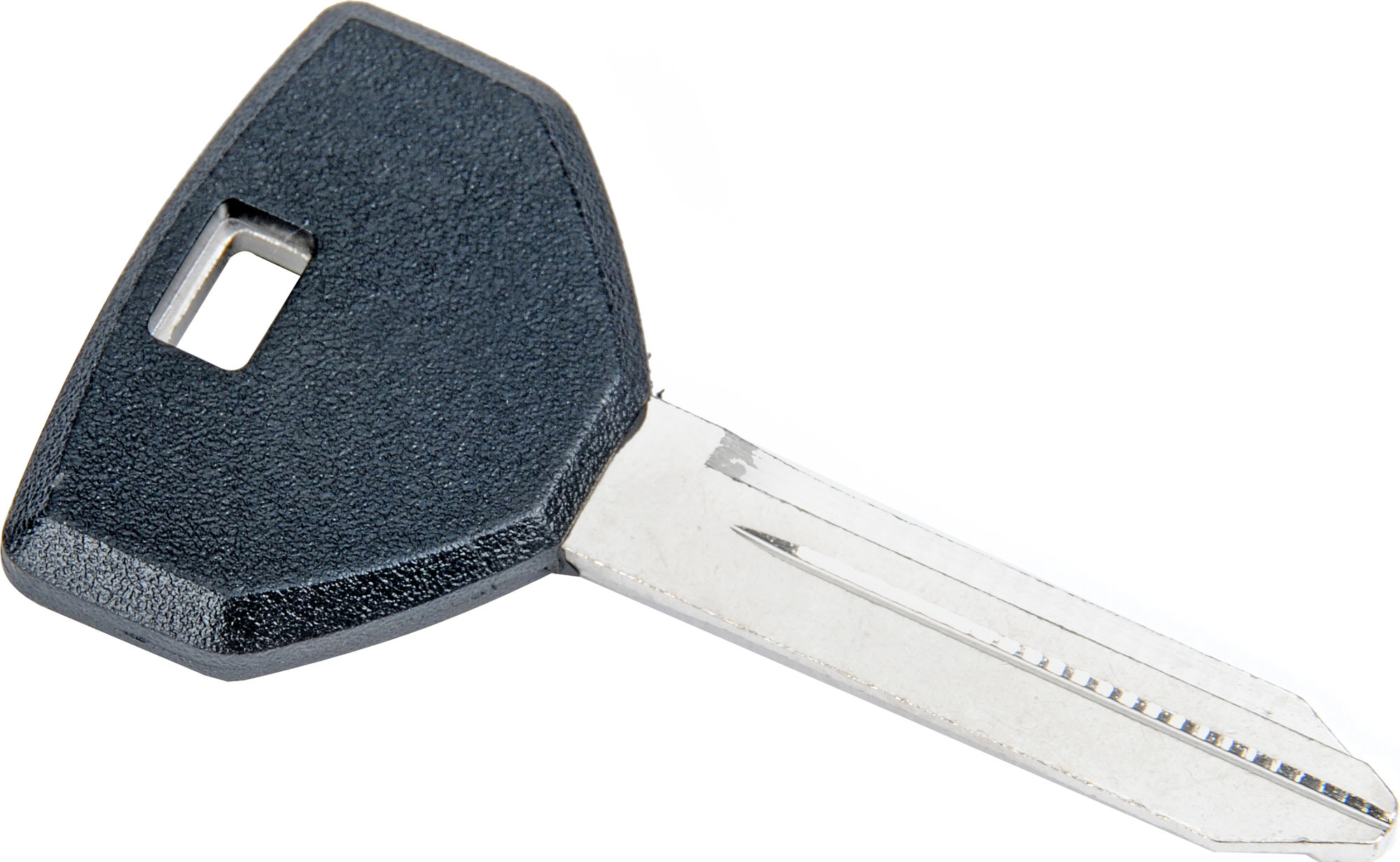
Credit: www.quadratec.com
Reliability And Durability
The Jeep XJ and ZJ have core differences in reliability and durability. The XJ is favored for dedicated off-roading and customization, while the ZJ excels as a daily driver and family hauler.
Assessing The Reliability And Durability Of Xj And Zj Models:
The reliability and durability of a vehicle are crucial factors to consider when comparing different models.
In the case of the Jeep XJ and ZJ, assessing these aspects can help you make an informed decision.
Let’s dive into the specific differences between the XJ and ZJ models:
Jeep Xj Reliability And Durability:
- The Jeep XJ, also known as the Cherokee, has gained a strong reputation for its reliability over the years.
- It is built with a unibody construction, which contributes to its durability and sturdy build.
- The XJ is known for its ruggedness and ability to handle rough terrains. It has proven itself as a capable off-roader.
- The engine options in the XJ, particularly the 4.0L inline-six engine, are known for their longevity and durability.
- Common issues with the XJ include rusting of the body and electrical problems, but these can be addressed with proper maintenance.
Jeep Zj Reliability And Durability:
- The Jeep ZJ, also known as the Grand Cherokee, is another solid option when it comes to reliability and durability.
- Like the XJ, the ZJ features a unibody construction, which contributes to its robustness.
- The ZJ offers a more refined and comfortable ride compared to the XJ, making it a great choice for daily commuting as well as off-road adventures.
- The ZJ is equipped with various engine options, including the 4.0L inline-six engine, similar to the XJ, which is known for its reliability.
- There have been reported issues with the ZJ’s transmission, air suspension, and electrical components. These can be addressed with regular maintenance and timely repairs.
Both the Jeep XJ and ZJ models have their own set of advantages when it comes to reliability and durability.
The XJ is known for its ruggedness and off-road capabilities, while the ZJ offers a more comfortable ride with additional features.
Ultimately, it comes down to personal preference and the intended use of the vehicle.
Regular maintenance and addressing common issues can ensure the longevity and durability of both models.
Safety Features
The Jeep XJ and ZJ have core differences in terms of safety features.
While the XJ is known for its excellent off-roading capabilities and customization options, the ZJ shines as a practical daily driver with a focus on passenger and cargo capacity.
Discussing The Safety Features Offered In Xj And Zj Models:
Jeep XJ and ZJ models have varying safety features that cater to different needs.
Let’s compare the advanced driver-assistance systems, airbag systems, and crash test ratings of these two popular Jeep models:
Advanced Driver-Assistance Systems:
- Both the XJ and ZJ models come with advanced driver-assistance systems designed to enhance safety on the road.
- The XJ model offers features like blind spot monitoring, lane departure warning, and adaptive cruise control.
- On the other hand, the ZJ model boasts advanced safety features such as forward collision warning, automatic emergency braking, and rearview camera.
Airbag Systems:
- Ensuring the safety of passengers is a top priority for both the XJ and ZJ models.
- The XJ model is equipped with standard front airbags for the driver and front passenger.
- The ZJ model takes it a step further by offering additional side-impact airbags to provide enhanced protection in case of a collision.
Crash Test Ratings:
- Crash test ratings play a crucial role in determining the overall safety of a vehicle.
- Both the XJ and ZJ models have undergone rigorous crash tests to assess their safety performance.
- The XJ model has received impressive crash test ratings from reputable organizations, highlighting its robust protective measures.
- Similarly, the ZJ model has also scored well in crash test evaluations, showcasing its commitment to passenger safety.
When comparing the safety features of the XJ and ZJ models, it becomes clear that both offer a range of advanced systems and protective measures.
However, it’s important for potential buyers to evaluate their specific safety requirements and preferences to determine which model aligns best with their needs.
Price And Value
When comparing the Jeep XJ and ZJ, the core differences lie in their price and value.
The XJ is a better choice for dedicated off-roading and customization, while the ZJ excels as a daily driver and family hauler.
Both offer unique features and capabilities to suit different preferences and needs.
Jeep Xj Vs Zj: Core Differences
Are you torn between choosing a Jeep XJ or ZJ? Both models have their own unique features and benefits.
In this section, we will analyze the cost-effectiveness and value proposition of the XJ and ZJ models.
Let’s take a closer look at their price, depreciation rates, and aftermarket support.
Analyzing The Cost-Effectiveness And Value Proposition Of Xj And Zj Models:
The pricing, depreciation rates, and aftermarket support can greatly influence your decision when comparing the Jeep XJ and ZJ. Here’s what you need to know:
- Initial purchase prices:
- XJ: The XJ model is often more affordable than the ZJ. Its simpler design and less luxurious features contribute to a lower price tag.
- ZJ: The ZJ, being a more upscale model, tends to have a higher initial purchase price compared to the XJ. Its additional features and premium amenities make it a more expensive option.
- Depreciation rates:
- XJ: The XJ model has been known to hold its value quite well. Its popularity among off-road enthusiasts and reliable performance contribute to a slower depreciation rate.
- ZJ: While the ZJ is a great vehicle, it tends to depreciate faster than the XJ. This is partly due to its higher initial price and the perception that it is a more luxury-oriented model.
- Aftermarket support:
- XJ: The XJ has a massive following and an extensive aftermarket support network. You can easily find a wide range of aftermarket parts and accessories for customization and modification.
- ZJ: Although the ZJ may not have as large of an aftermarket support community as the XJ, it still benefits from a decent selection of aftermarket options. You can find accessories to enhance its performance and appearance.
By carefully considering the initial purchase prices, depreciation rates, and aftermarket support, you can make an informed decision when choosing between the Jeep XJ and ZJ models.
Whether you prioritize affordability, potential resale value, or customization options, understanding the cost-effectiveness and value proposition of each model is essential.
So, which one suits your needs and preferences better? That’s for you to decide based on your budget, priorities, and the driving experience you’re seeking.
Happy Jeep hunting!
Sources:
- https://forum.expeditionportal.com/
- https://www.offroadxtreme.com/news/
- https://www.gearpatrol.com/
FAQs For Jeep XJ Vs ZJ
Do Zj Seats Fit In Xj?
Yes, ZJ seats can fit in XJ. Front seats just need XJ seat bases, and the rear seat bottom requires trimming.
Are Zj Jeeps Reliable?
ZJ Jeeps are generally reliable, but there can be issues with interior quality and electrical problems.
Why Is The Xj So Good?
The XJ is exceptional because of its brilliant design, durable engine, and impressive off-roading capabilities.
Is The Zj Or Wj Better?
The XJ is better for off-roading and customization, while the ZJ is better for daily driving and family use.
Conclusion
When comparing the Jeep XJ and ZJ, it’s clear that each model has its unique strengths. The XJ is an excellent choice for those seeking dedicated off-road capabilities and customization options.
With its durable engine and well-proportioned design, the XJ proves to be a capable and reliable option for adventurous drivers.
On the other hand, the ZJ excels as a daily driver and family hauler. Its interiors offer a more car-like feel, making it comfortable for everyday use.
While the ZJ may not have the same off-road prowess as the XJ, it still boasts impressive capabilities and a solid performance.
Ultimately, the decision between the XJ and ZJ depends on individual preferences and needs. Both models have their advantages, and choosing the right one comes down to how you intend to use your Jeep.

